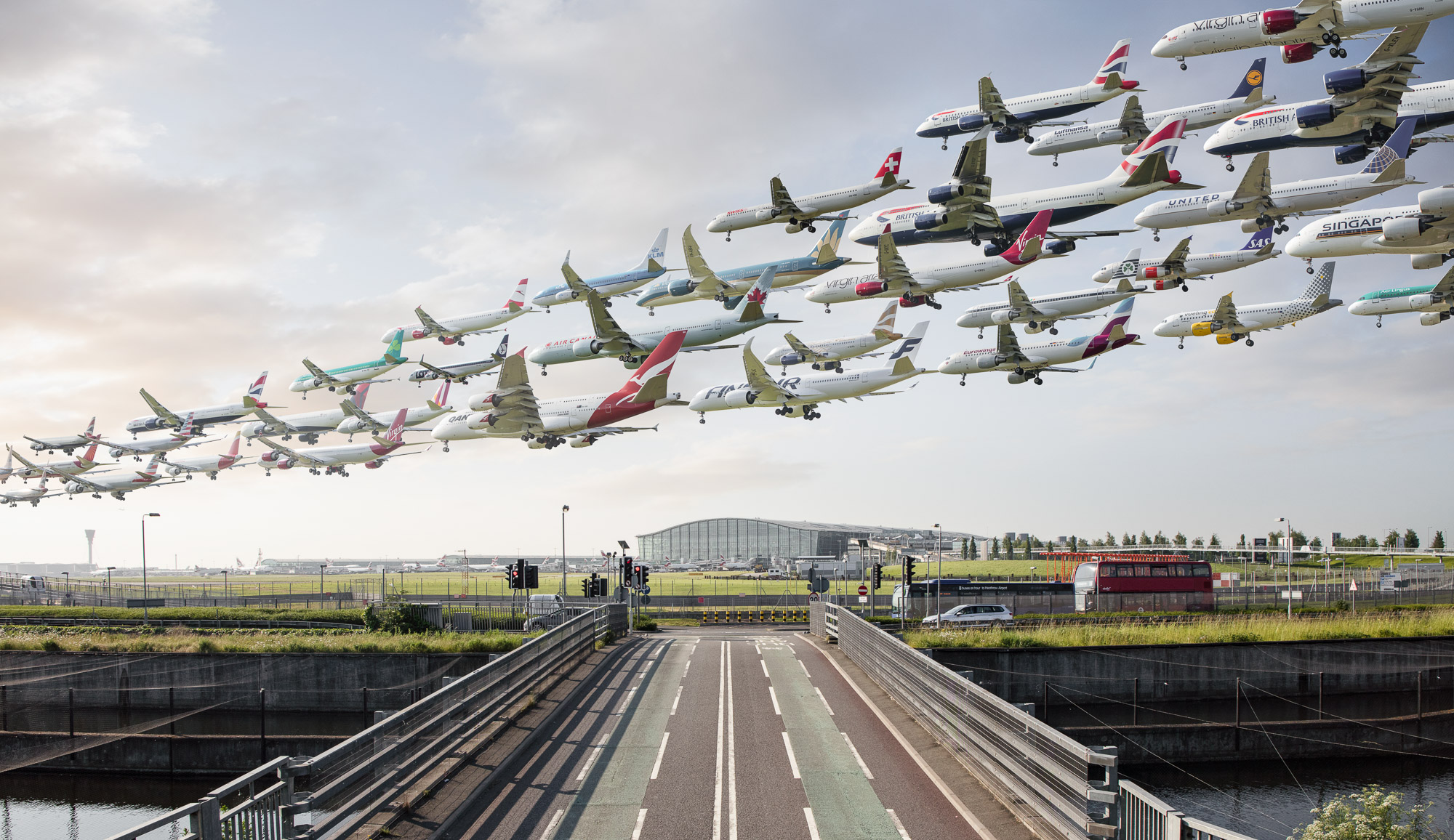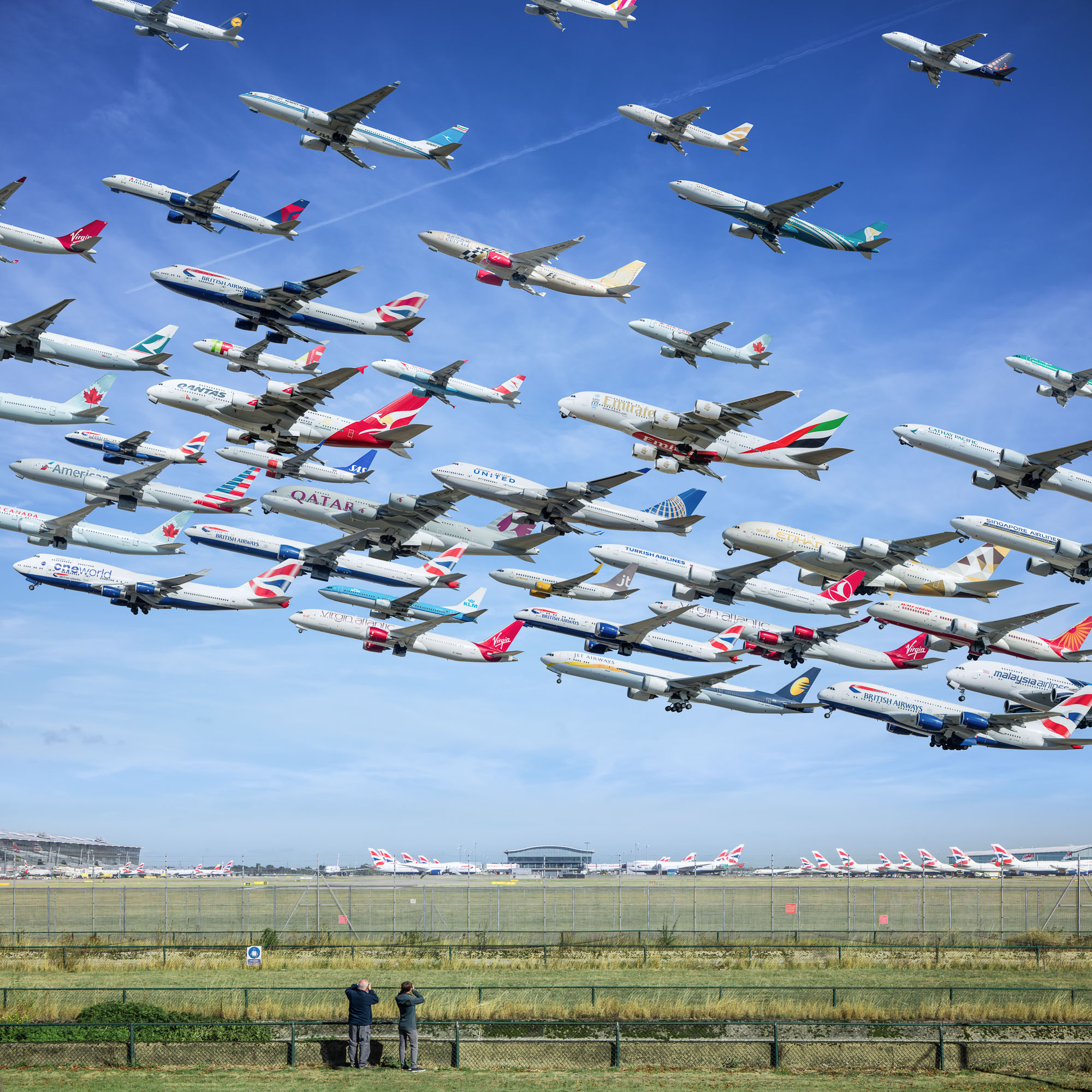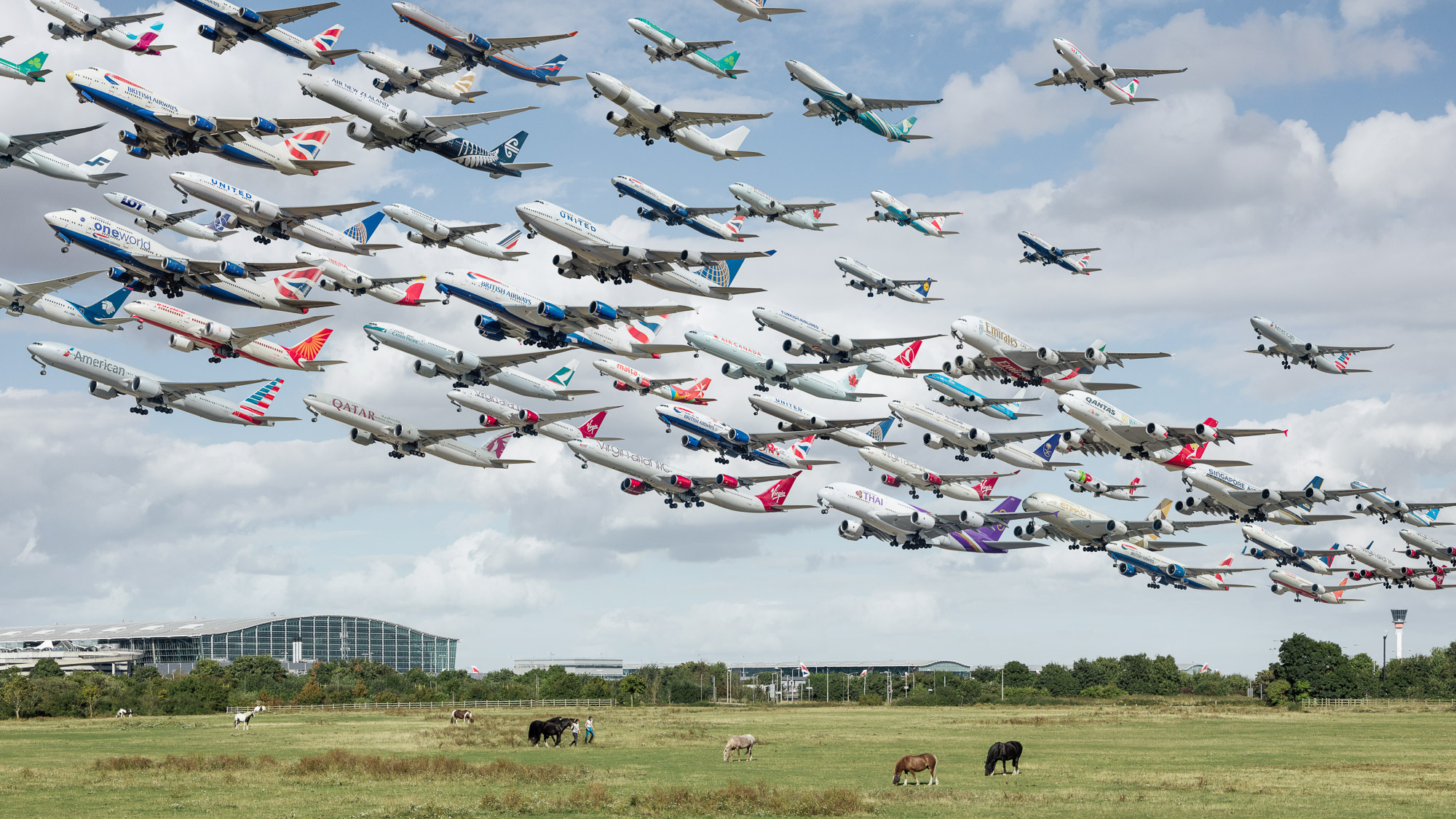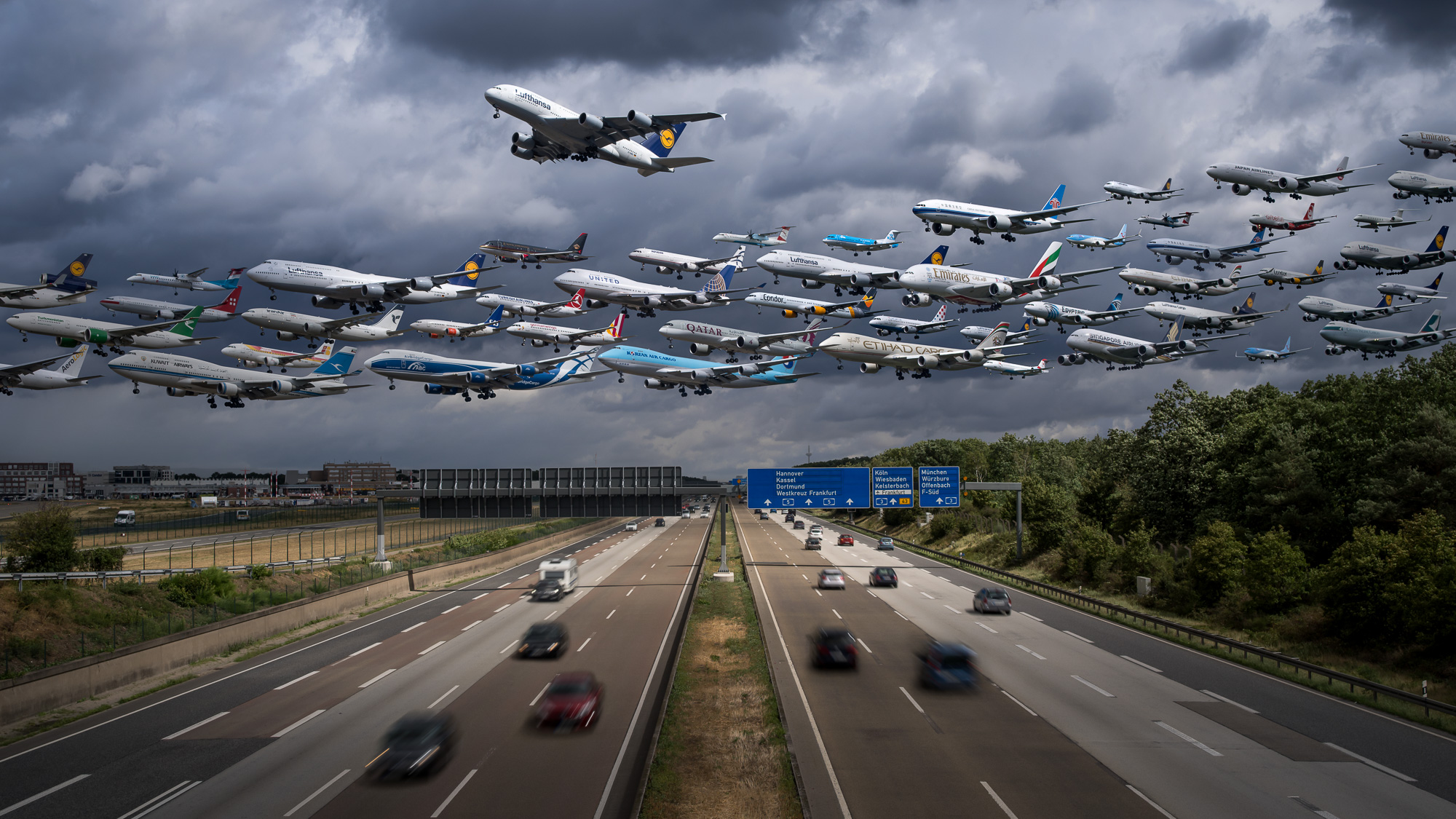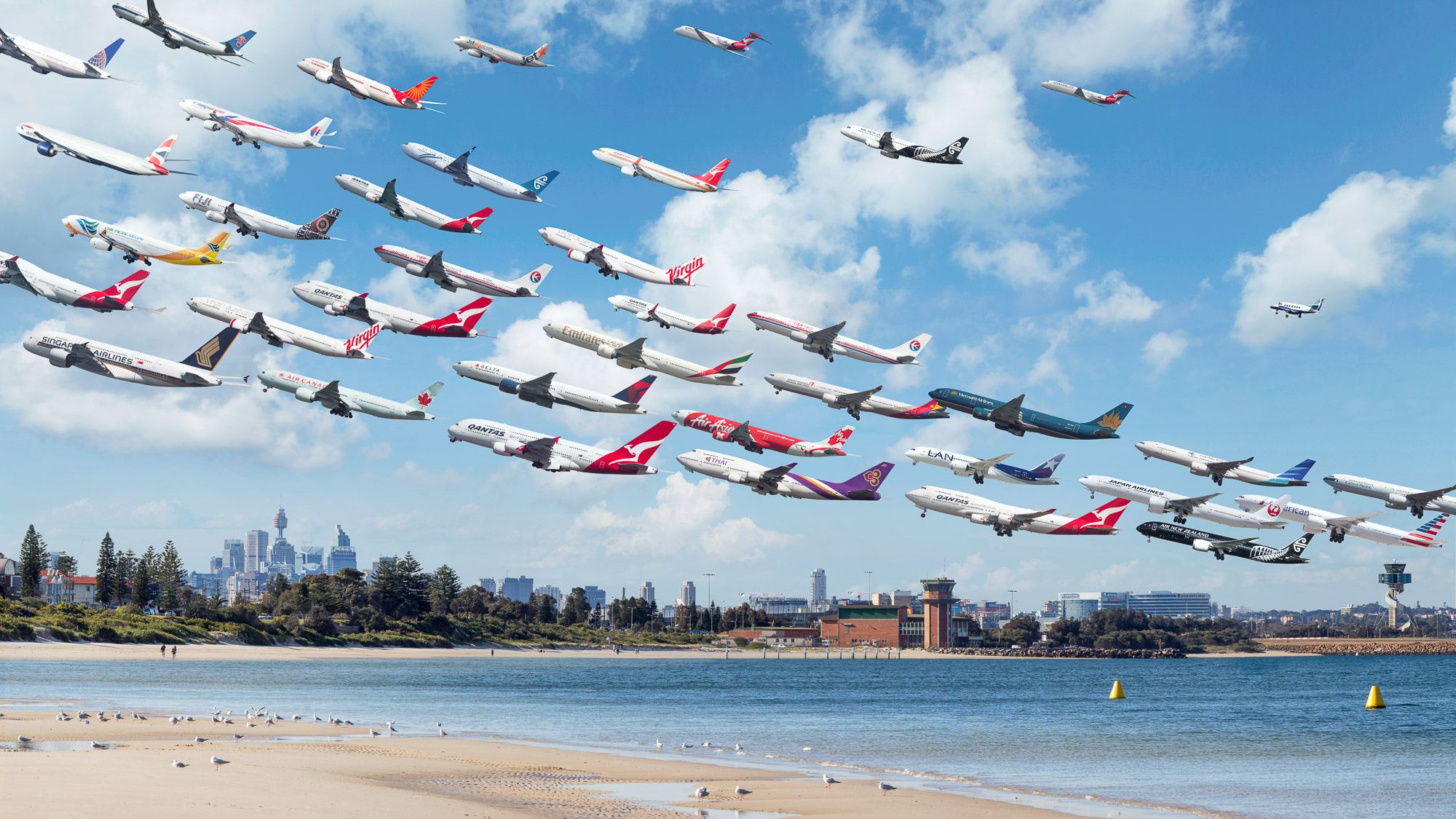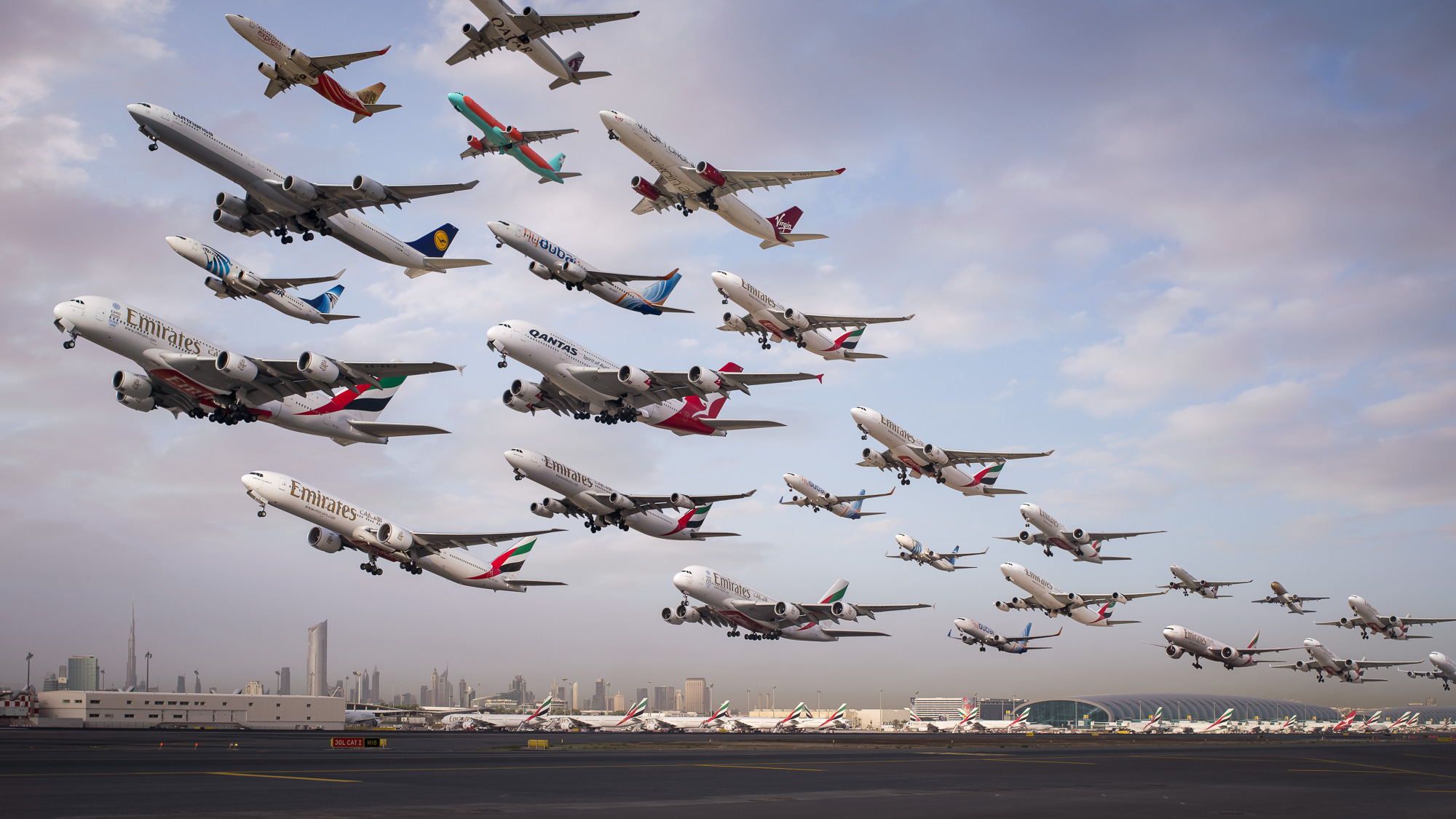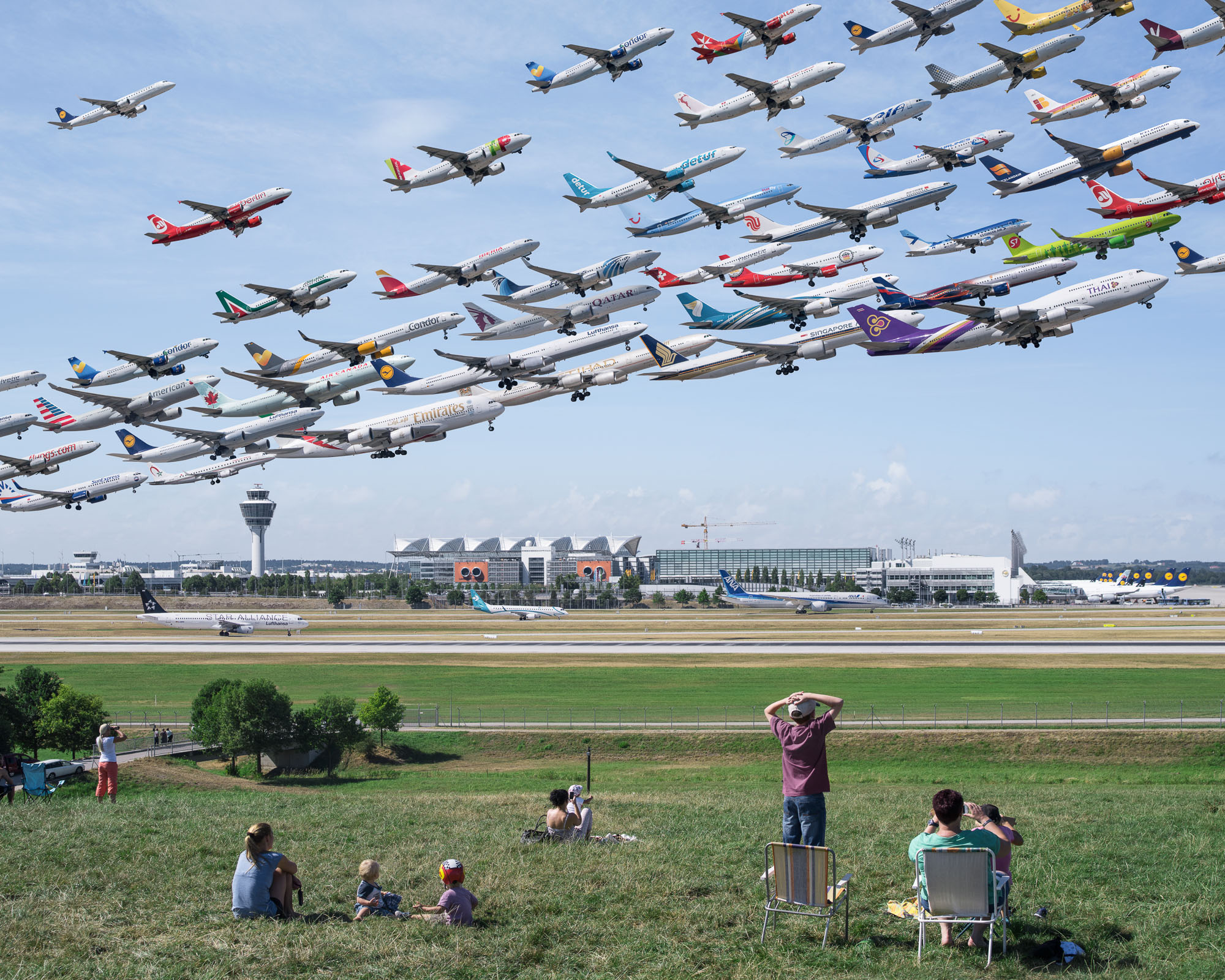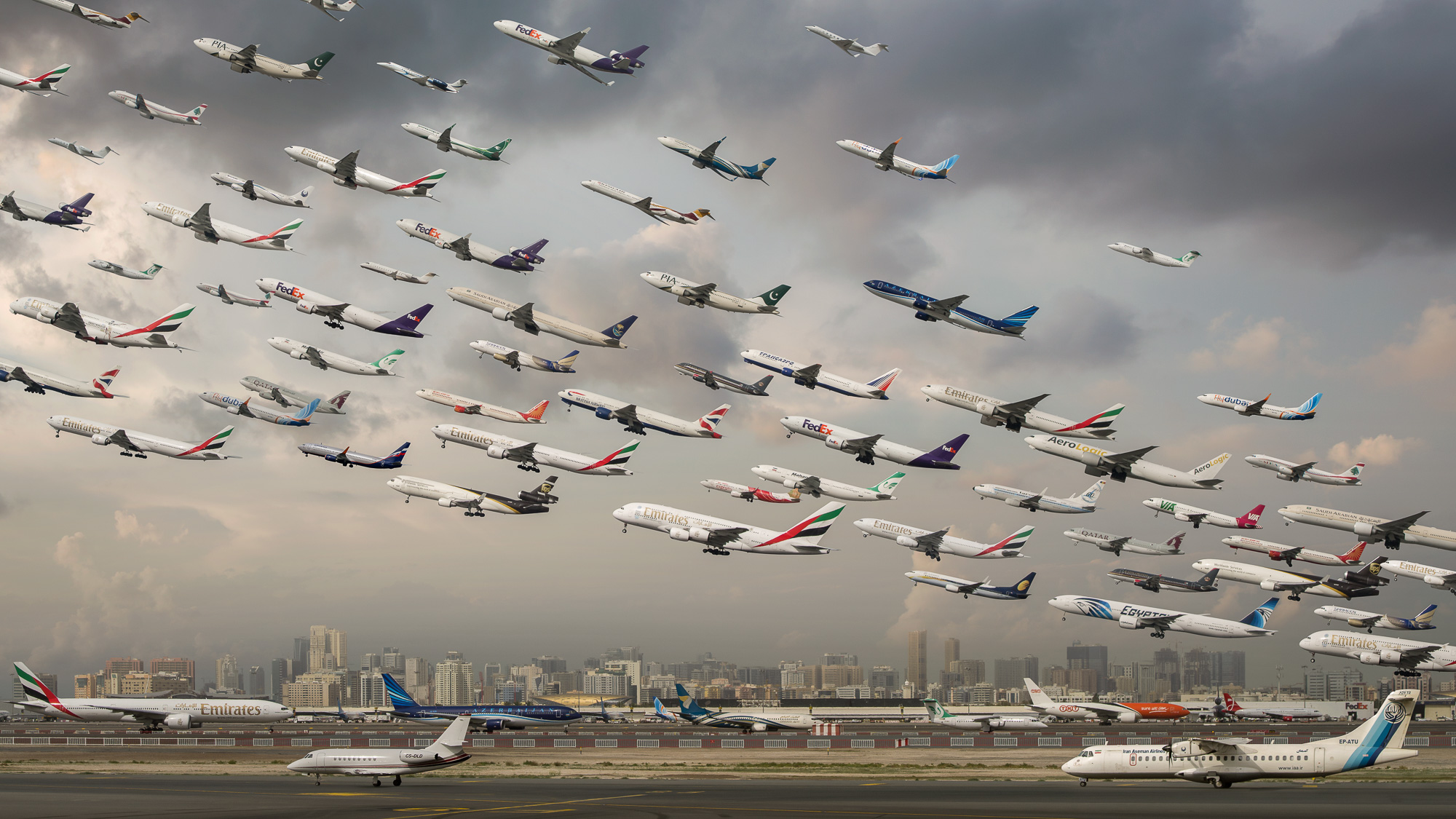I just spent nearly two years of my life photographing airplanes and airports.
It wasn’t two years straight with no interruption, but it did occupy a good deal of my waking hours. Even if I wasn’t photographing airports or airplanes, I was planning how I was going to photograph them, making arrangements to photograph them, or staying up until 3am tracking airplane movements and wind patterns.
In March of 2014, I created the first image of this series, Wake Turbulence, which depicted an entire day’s worth of aircraft movements at LAX composited into a single image. The resulting work was plastered all over the internet, was named one of the top images of 2014, and even ended up on a Gestalten book cover which is now in museums and bookstores all over the world.
That image was supposed to be a proof-of-concept. I just wanted to try it out, see if it was feasible, see if the idea had legs. I whipped that image together in one (16 hour) sitting, paying not-so-close attention to photoshop perfection, and just getting it done. Well, obviously the concept had legs as that one image altered the entire course of my life. After a bit of thinking, I decided I wanted to repeat the concept at airports around the world, and by doing some back-of-the-napkin planning I threw together a list of 15 or so airports that I felt would benefit from a similar image. Check out the video below which gives a somewhat humorous glimpse into the adventure that was creating these images.
In the summer of 2015 I traveled to most of these airports in one successive round-the-world trip. Sao Paulo, Amsterdam, Frankfurt, Munich, Zurich, Tokyo, Sydney, Auckland. London and Dubai came separately, as they were both logistically quite difficult to pull off. Even after spending all that time traveling (and all the money that goes along with it), there were still airports that I couldn’t get the image I wanted at.
I told you I planned this trip on the back of a napkin with no real foresight; that’s just my personality I suppose. Shoot first and aim later. We got to Tokyo in the middle of August and it was hotter than a warm day in hell and you couldn’t see your own hand in front of you because the humidity and smog there are so crazy in the summer. The image I wanted had Haneda airport with Mt Fuji in the background, over 60 miles away, and there was just no way that it was ever going to happen with the smog. I had a great time in Tokyo, but in the end that stop ended up being a week spent chasing nothing.
It was however great to learn the lay of the land and get a real feel for how things work in Japan. I was able to actually see the airport in the flesh, and plan for the shot. I knew I’d have to get on the water to get the right angle, so in March of 2016 I headed back to Tokyo after spotting a perfectly clear weather window that would allow us to see Fuji without smog from Tokyo, chartered a fishing boat, and spent two days on Tokyo Bay in a 15′ fiberglass boat photographing airplanes. Quite the trip. The whole thing, from booking the flight to chartering the boat to creating the image to coming home again was a little over ten days. Madness!
London in particular was a nasty one. I’ve been going to Dubai for the past few years and usually make an intermediary stop in London, so this year in January I decided to spend some time scouting and again, getting the lay of the land. In May and June of 2016 I scheduled 17 days in London to make the shot happen – and it either rained every day, the wind blew in the wrong direction, or some other combination of factors presented themselves to make the image impossible.
But there’s a silver lining to all of this. I was able to lay the groundwork for some excellent contacts who helped me get access to private land to get exactly the image I wanted. So in September of 2016 I repeated my Tokyo trip – I booked a ticket two days in advance, flew to London, got my shot, and got home when I saw a perfect weather window open up (which as you know is no small feat in London, world capital of shifty weather!). Not only was I lucky enough to get a week-long spell of great weather which allowed me to create not one but three images at LHR.
After I had created the images, it was a matter of putting them together. The process can be arduous to say the least. From some locations I had thousands of pictures that needed to be culled, color corrected, extracted, and composited. For a few locations, I had weather that changed throughout the day (e.g. Frankfurt) from sunny to cloudy and back again. I had to think of a way to put these together that respected the weather and location, showed the aircraft realistically, and looked relatively believable.
This is where I’m going to interrupt and talk about how absolutely incredibly lucky I was with my first LAX image, Wake Turbulence.
Weather: LA has perfect weather. That means the exposure on the planes never changes throughout most of the day, which makes it super simple to just cut out each plane and lay them on top of each other without it looking goofy. In places like Europe and New Zealand where the weather is constantly changing, this was a challenge. As planes passed in and out of clouds, the exposure and shadow on them change. It was quite a challenge to put the images together in cloudy locations such as this, or even more challenging sometimes to sit around waiting for the *perfect* day, which just isn’t going to happen sometimes.
Sun: LAX’s runways are oriented so that the sun is at your back when photographing planes all day. Since runways are built to take advantage of prevailing winds, this isn’t always the case. Most airports had sun on the ‘good side’ only in the morning, or in the afternoon, so it made it tricky to get clean exposures throughout an entire day. Sydney was one such ‘fickle’ airport, with the sun transiting directly over the runway mid-way through the day. Nightmare comes to mind.
Wind: If the wind changes halfway through the day, the shot is over. Planes are always taking off into the wind, so if I had half a day’s worth of images and then the weather gods decided to laugh at me by changing wind direction, that means the planes are going to be taking off on another runway and I’m left with only half of what I need to make the shot. Try again another day! So waiting for a day with clean, consistent wind was a battle in some spots.
Accessibility: Clutter’s Park on the south side of the 25 runways at LAX provides an absolutely perfect view of planes taking off. It is exceedingly rare for an airport to allow such up-close and unobstructed views of the tarmac, ramp and runways. While I got lucky with some locations, I had to get really creative with others. In some cases I spent multiple days walking around airport perimeter roads in a reverse spiral sort of pattern to find the right spot. At some airports I had help from employees, like Auckland and Dubai. In Dubai, planespotting is actually illegal, and it took a lot of moving pieces to get the shoot to happen. Some airports were totally opposed to helping in any way, which might have actually been a blessing, because it made me look extra hard for the right spots. Art through adversity, right? And then even if you do find a great spot, you better hope that the wind and weather cooperate. At a place like Amsterdam Schiphol, which has six runways, you’re literally playing roulette with which planes are going to take off where. A total gamble and completely opposite of LAX’s consistent weather, winds, and sun.
So my proof of concept was deceptively easy to make. No other picture was as difficult! In post processing, each image required careful coloring, compositing, and retouching to look both realistic and interesting. Many of the final images went through multiple versions before I settle on a final look and feel.
I often get asked exactly just how ‘real’ these images are. And on one hand, they are as real as they get. I’d sit in one place for an entire day, and take a burst of pictures of each plane as it crossed in front of me. I’d then take one of those captures, wherever I thought I’d like that plane to be, and put it on my base image. Every plane in every picture was actually right in front of me at that point in time, and they are all exactly where they were relative to other planes in the frame. If you went to some of these spots, you’d see the exact same thing that I saw. For example, you could very easily walk to the Esso station on Heathrow’s perimeter road and experience exactly what I did as I made the picture. The exceptions, however, are the landing images. In order to actually show multiple planes landing together, I had to get moderately creative with the aircraft placement. In real life, each plane follows a pre-determined glideslope down to the runway; this glideslope is an imaginary line that leads a plane down an exact predetermined path in order to touch down at just the right point. In order to make these landing images more interesting, I had to spread the planes out just a little bit so they could breathe. Without doing that, there simply wouldn’t be a picture, as the planes would all be on the same plane (excuse my lame pun there) and they’d all be piled on top of one another. So without a little artistic liberty, there simply wouldn’t be a picture at all.
Some of the images benefit greatly from telephoto compression. The best example of this is my image from Tokyo’s Haneda airport. In the image, Mt Fuji looms large behind the airport. In real life, this mountain is over 60 miles away! But by using a focal length of about 170mm, I was able to narrow the field of view and give the effect of Mt Fuji seeming as if it is right on top of the airport. If you were to be crazy like me, charter a boat to take you to that same spot on a perfectly clear winter’s day, you’d see Mt Fuji right behind Haneda airport as well. This image was in particular quite a nightmare to put together as well – since I was shooting from a boat that was constantly moving. I shot most of these images with the camera on a tripod to facilitate easy compositing, but when you’re on a boat in the middle of Tokyo Bay, you’re not on a stable platform at all – so putting all the pieces together for this one actually took a few months of work on and off.
So, all technical jargon aside, I am so extremely happy with how all of these images turned out. It was absolutely one of the most challenging projects I’ve worked on from a logistics standpoint, but the whole thing was a giant adventure – one I’d not hesitate to go on again.
To see the entire series or to buy prints, head over to the projects section of my website or visit my store. For media enquiries, use the contact form and I’ll get back to you as soon as I can! I hope you enjoy viewing these images and the seeing the inherent beauty in aviation, something that’s easy to forget as air travel has become a touch more mundane in recent years.



